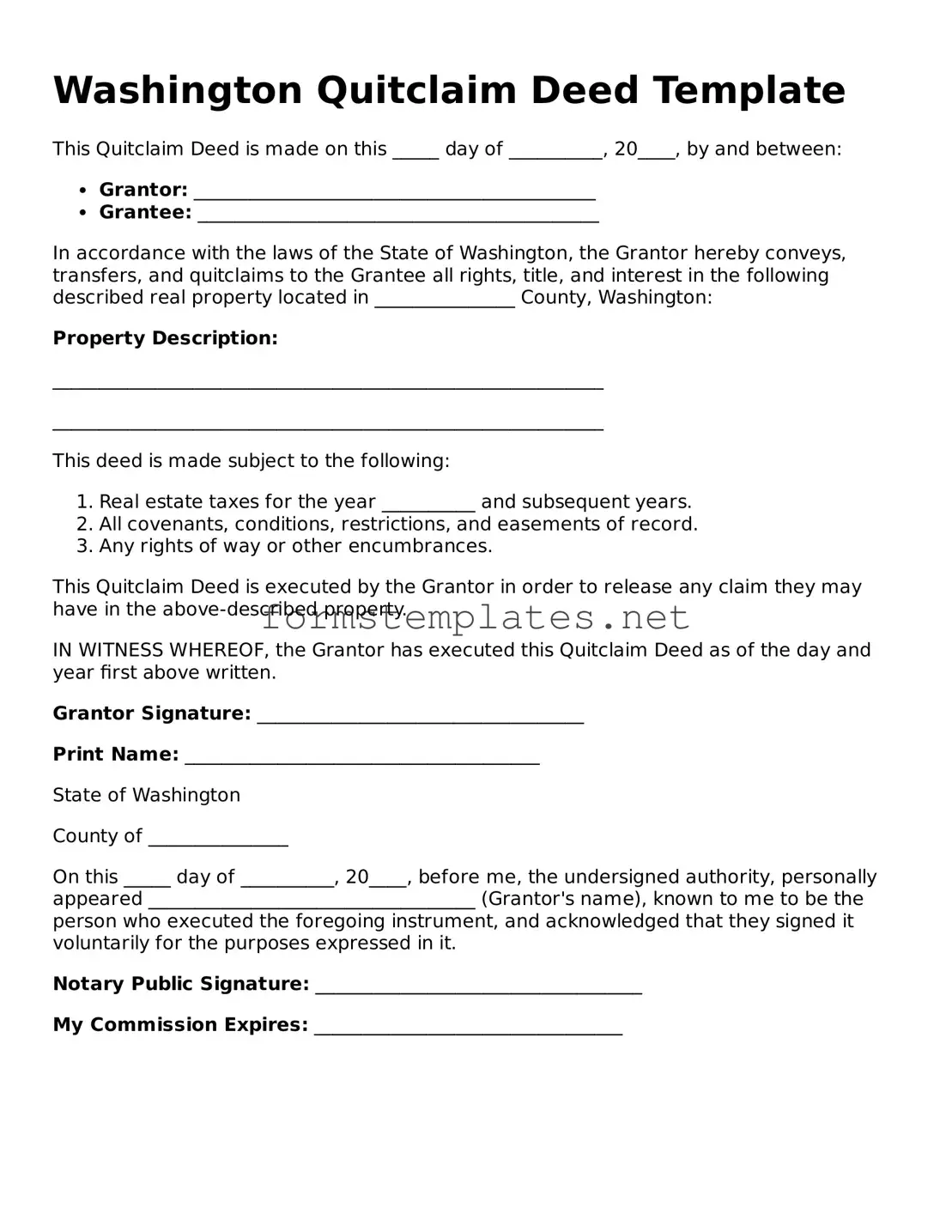Washington Quitclaim Deed Template
This Quitclaim Deed is made on this _____ day of __________, 20____, by and between:
- Grantor: ___________________________________________
- Grantee: ___________________________________________
In accordance with the laws of the State of Washington, the Grantor hereby conveys, transfers, and quitclaims to the Grantee all rights, title, and interest in the following described real property located in _______________ County, Washington:
Property Description:
___________________________________________________________
___________________________________________________________
This deed is made subject to the following:
- Real estate taxes for the year __________ and subsequent years.
- All covenants, conditions, restrictions, and easements of record.
- Any rights of way or other encumbrances.
This Quitclaim Deed is executed by the Grantor in order to release any claim they may have in the above-described property.
IN WITNESS WHEREOF, the Grantor has executed this Quitclaim Deed as of the day and year first above written.
Grantor Signature: ___________________________________
Print Name: ______________________________________
State of Washington
County of _______________
On this _____ day of __________, 20____, before me, the undersigned authority, personally appeared ___________________________________ (Grantor's name), known to me to be the person who executed the foregoing instrument, and acknowledged that they signed it voluntarily for the purposes expressed in it.
Notary Public Signature: ___________________________________
My Commission Expires: _________________________________
